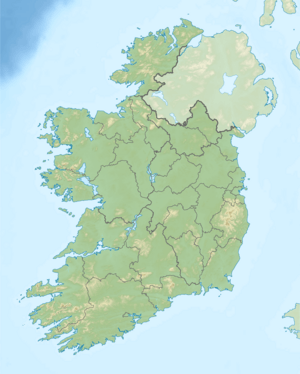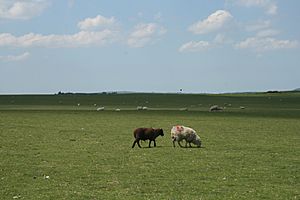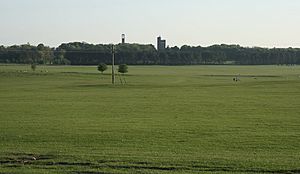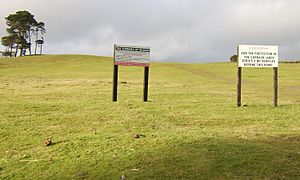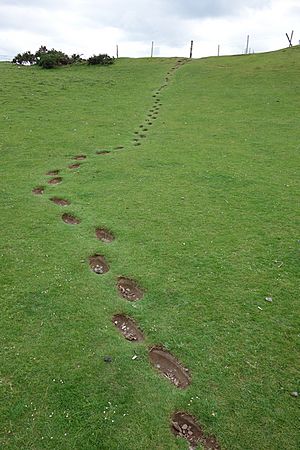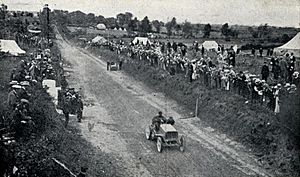The Curragh facts for kids
Quick facts for kids The Curragh |
|
|---|---|
| The Curragh of Kildare | |
 |
|
| Coordinates | 53°09′27″N 06°50′24″W / 53.15750°N 6.84000°W |
| Part of | Central Plain |
| Elevation | 30 metres (98 ft) |
| Area | 19.71 square kilometres (7.61 sq mi; 4,870 acres) |
| Geology | Plain |
The Curragh (pronounced KURR-uh) is a large, flat, open plain in County Kildare, Ireland. It is famous for its beautiful landscape and its connection to horses. Many people come here for horse breeding and training.
On the edge of Kildare town, you can find the Irish National Stud and the lovely Japanese Gardens. The Curragh also has Pollardstown Fen, which is Ireland's biggest fen (a type of wetland). This area is special for scientists who study plants and animals. Many different bird species nest and visit here, and rare plants grow in the fen.
The ground in the Curragh is mostly sandy. This sandy soil was formed by ancient glaciers, which left behind sand and gravel. Because of this, the area has excellent natural drainage.
Contents
The Curragh's Long History
The Curragh has been an important place for a very long time, even before Christianity arrived in Ireland. Many old myths and legends are connected to it. North of the Curragh is the Hill of Allen, which is said to be where the mythical warriors called the Fianna used to meet.
One famous legend tells of St Brigid in about 480 AD. She wanted to build a monastery in Kildare. She asked the King of Leinster for land. He said she could have as much land as her cloak would cover. When she placed her cloak on the ground, it magically spread out to cover the entire Curragh plain!
In 1234, a battle took place at the Curragh. Richard Marshal, 3rd Earl of Pembroke, fought against men loyal to Henry III of England. Lord Pembroke was hurt in this battle and sadly passed away a few days later.
The Curragh was often used as a gathering place for armies. During the Irish Rebellion of 1798, a sad event known as the Gibbet Rath massacre happened here. Today, the Curragh Camp is located on the plain. This is where the Irish Defence Forces train.
There's a natural bowl-shaped area on the Curragh called Donnelly's Hollow. In 1815, a huge crowd gathered here to watch the Irish boxing champion Dan Donnelly fight and defeat the English champion George Cooper. Donnelly was known for his long reach.
In 1941, during World War II, the Curragh was bombed by the German air force, the Luftwaffe. Luckily, the damage was not severe.
Laws and the Curragh
| Curragh of Kildare Act 1868 | |
|---|---|
| Act of Parliament | |
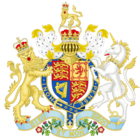
|
|
| Long title | An Act to make better Provision for the Management and Use of the Curragh of Kildare. |
| Citation | 31 & 32 Vict. c. 60 |
| Dates | |
| Royal assent | 16 July 1868 |
| Other legislation | |
| Repealed by | Curragh of Kildare Act 1961 |
|
Status: Repealed
|
|
| Curragh of Kildare Act 1870 | |
|---|---|
| Act of Parliament | |

|
|
| Long title | An Act to confirm the Award under "The Curragh of Kildare Act, 1868." and for other purposes relating thereto. |
| Citation | 33 & 34 Vict. c. 74 |
| Dates | |
| Royal assent | 9 August 1870 |
| Other legislation | |
| Relates to | Curragh of Kildare Act 1868 |
|
Status: Amended
|
|
The Curragh has been mentioned in legal documents for a very long time. The earliest mention was in 1299. An act was passed then to stop pigs from eating too much grass on the plains.
In 1868, a law called the Curragh of Kildare Act was created. This law set up a special role called a Ranger. The Ranger was in charge of looking after the Curragh for horse racing and training.
Another law in 1870, the Curragh of Kildare Act 1870, explained who had the right to let their sheep graze on the Curragh.
When Ireland became the Irish Free State in 1922, the Curragh lands became the property of the Irish government. Later, in 1961, a new law changed things again. It removed the Ranger's job and gave the duties to the Department of Defence.
Military Presence
The Curragh has had a military presence since 1856. Today, the Curragh Camp is the main training center for the Irish Defence Forces. There is also a Curragh Military Museum that opened in 2010.
Sports and Racing
Horse Racing at the Curragh
The Curragh Racecourse is Ireland's most important flat horse racing track. Every year, it hosts all five of Ireland's biggest horse races. These include the Irish Derby Stakes, the Irish Oaks, and the Irish St. Leger.
Motor Racing History
In 1903, a famous international car race called the Gordon Bennett Cup took place through the Curragh. This was the first time such a race was held in what was then the United Kingdom. Racing on public roads was against the law in Britain. So, Ireland was chosen because its roads were straight and suitable.
As a special tribute to Ireland, the British racing team chose to race in a color called Shamrock green. This color later became known as British racing green. The race covered many loops through towns like Kilcullen, Kildare, and Carlow. A Belgian driver named Camille Jenatzy won the race in his Mercedes car.
After World War II, both car and motorcycle races were held on the Curragh. These events sometimes attracted huge crowds of up to 30,000 people. Car racing continued until 1954, and motorcycle racing until 1967. Famous drivers like Stirling Moss even competed here.
Education in the Area
The Curragh Camp has a primary school called St Catherine of Sienna. There is also a secondary school, Curragh Community College, which was founded in 1933. It is located near the parade ground. As of August 2025, there are plans to move this school to a new building in Kildare town.
Other schools in the Curragh area include Newbridge Educate Together, a national school. There is also Gaelscoil Chill Dara, which is an Irish language school. This school opened in 1995 and has grown a lot. It takes students from nearby towns like Newbridge, Kildare Town, and Naas. As of August 2024, Gaelscoil Chill Dara had 312 students.
See also
Images for kids


